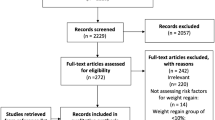Abstract
Background
Cameron lesions (CL) are common complications of large hiatal hernia (HH) disease and are known to result in chronic blood loss with resultant microcytic anemia. There is support in the literature that repair of HH may lead to resolution of CL and restore normal hemoglobin levels. This study aimed to determine the impact of elective HH repair on resolution of anemia and the quality of life (QOL) in patients with CL.
Method
A single-institution, retrospective review analyzed all patients with history of CL or anemia (hemoglobin < 12.0 gm/dl in women, < 13.5 gm/dl in men) who underwent HH repair from January 2012 to May 2019. Four validated surveys were used to assess QOL: Reflux Symptom Index (RSI), gastroesophageal reflux disease health-related QOL (GERD-HRQL), laryngopharyngeal reflux health-related QOL (LPR-HRQL), and QOL and swallowing disorders (SWAL) survey. History of iron supplements and perioperative hemoglobin were also noted.
Result
Ninety-six patients were included in this study. The mean age was 67.4 ± 10.8 years and 79% of patients were female. CL were endoscopically identified in 61.5% of patients preoperatively, and the rest of the patients experienced anemia of undiagnosed origin but had a high suspicion for CL. Mean follow-up after HH repair was 17.3 months (range, 1 month–5 years). Mean preoperative hemoglobin was 11.01 ± 2.9 gm/dl and 13.23 ± 1.6 gm/dl postoperatively (p < 0.01). Forty-two (73.7%) patients had resolution of anemia during follow-up and 94.5% stopped supplemental oral iron. Finally, QOL scores significantly improved after surgical intervention: RSI (63%), GERD-HRQL (77%), LPR-HRQOL (72%), and SWAL (13%).
Conclusion
Elective HH repair in patients with chronic anemia secondary to CL may potentially resolve CL and anemia and contribute to significant QOL improvements. Future studies will prospectively assess the resolution of CL with biochemical and endoscopic follow-up to confirm the preliminary findings of our analysis.

Similar content being viewed by others
References
Chevrollier G, Brown A, Keith S et al (2019) Preoperative anemia: a common finding that predicts worse outcomes in patients undergoing primary hiatal hernia repair. Surg Endosc 33(2):535–542. https://doi.org/10.1007/s00464-018-6328-4
Trastek VF, Allen MS, Deschamps C, Pairolero PC, Thompson A (1996) Diaphragmatic hernia and associated anemia: response to surgical treatment. J Thorac Cardiovasc Surg 112(5):1340–1345. https://doi.org/10.1016/S0022-5223(96)70149-6
Kimer N, Schmidt PN, Krag A (2010) Cameron lesions: an often overlooked cause of iron deficiency anaemia in patients with large hiatal hernias. BMJ Case Rep. https://doi.org/10.1136/bcr.06.2010.3129
Cameron AJ (1976) Incidence of iron deficiency anemia in patients with large diaphragmatic hernia. A controlled study. Mayo Clin Proc 51(12):767
Gray DM, Kushnir V, Kalra G et al (2015) Cameron lesions in patients with hiatal hernias: prevalence, presentation, and treatment outcome. Dis Esophagus 28(5):448–452. https://doi.org/10.1111/dote.12223
Windsor CW, Collis JL (1967) Anaemia and hiatus hernia: experience in 450 patients. Thorax 22(1):73–78. https://doi.org/10.1136/thx.22.1.73
Moskovitz M, Fadden R, Min T, Jansma D, Gavaler J (1992) Large hiatal hernias, anemia, and linear gastric erosion: studies of etiology and medical therapy. Am J Gastroenterol 87(5):622–626
Skipworth RJE, Staerkle RF, Leibman S, Smith GS (2014) Transfusion-dependent anaemia: an overlooked complication of paraoesophageal hernias. Int Sch Res Notices 2014:479240–479244. https://doi.org/10.1155/2014/479240
Carrott P, Markar S, Hong J, Kuppusamy M, Koehler R, Low D (2013) Iron-deficiency anemia is a common presenting issue with giant paraesophageal hernia and resolves following repair. J Gastrointest Surg 17(5):858–862. https://doi.org/10.1007/s11605-013-2184-7
World Health Organization (2011) Haemoglobin concentrations for the diagnosis of anaemia and assessment of severity. http://www.who.int/iris/handle/10665/85839. Accessed 1 Apr 2019
Weltz AS, Zahiri HR, Sibia US, Wu N, Fantry GT, Park AE (2017) Patients are well served by Collis gastroplasty when indicated. Surgery 162(3):568–576. https://doi.org/10.1016/j.surg.2017.04.005
McHorney CA, Robbins J, Lomax K et al (2002) The SWAL–QOL and SWAL–CARE outcomes tool for oropharyngeal dysphagia in adults: III. Documentation of reliability and validity. Dysphagia 17(2):97–114. https://doi.org/10.1007/s00455-001-0109-1
Keefe MA (2006) Validation of a quality-of-life instrument for laryngopharyngeal reflux. Yearb Otolaryngol Head Neck Surg 2006:129–130. https://doi.org/10.1016/S1041-892X(08)70113-6
Velanovich V (2007) The development of the GERD-HRQL symptom severity instrument. Dis Esophagus 20(2):130–134. https://doi.org/10.1111/j.1442-2050.2007.00658.x
Belafsky PC, Postma GN, Koufman JA (2002) Validity and reliability of the Reflux Symptom Index (RSI). J Voice 16(2):274–277. https://doi.org/10.1016/S0892-1997(02)00097-8
Harris PA, Taylor R, Thielke R, Payne J, Gonzalez N, Conde JG (2009) Research electronic data capture (REDCap)—a metadata-driven methodology and workflow process for providing translational research informatics support. J Biomed Inform 42(2):377–381. https://doi.org/10.1016/j.jbi.2008.08.010
Polomsky M, Hu R, Sepesi B et al (2010) A population-based analysis of emergent versus elective hospital admissions for an intrathoracic stomach. Surg Endosc 24(6):1250–1255. https://doi.org/10.1007/s00464-009-0755-1
Panzuto F, Di Giulio E, Capurso G et al (2004) Large hiatal hernia in patients with iron deficiency anaemia: a prospective study on prevalence and treatment. Aliment Pharmacol Ther 19(6):663–670. https://doi.org/10.1111/j.1365-2036.2004.01894.x
Short MW, Domagalski JE (2013) Iron deficiency anemia: evaluation and management. Am Fam Phys 87(2):98–104
Goddard AF, McIntyre AS, Scott BB, British Society of Gastroenterology (2000) Guidelines for the management of iron deficiency anaemia. Gut 46(Suppl 3-4):IV1
Cameron AJ, Higgins JA (1986) Linear gastric erosion. A lesion associated with large diaphragmatic hernia and chronic blood loss anemia. Gastroenterology 91(2):338
Funding
No financial support was received for this study.
Author information
Authors and Affiliations
Contributions
All authors certify that they accept responsibility as an author and have contributed to the concept, data gathering, analysis, manuscript drafting, and give their final approval.
Corresponding author
Ethics declarations
Disclosures
Dr. Park, Addo, Zahiri, Brooks, and Mr. Broda have no conflict of interest or financial or relevant financial ties to disclose.
Additional information
Publisher's Note
Springer Nature remains neutral with regard to jurisdictional claims in published maps and institutional affiliations.
Rights and permissions
About this article
Cite this article
Addo, A., Broda, A., Reza Zahiri, H. et al. Resolution of anemia and improved quality of life following laparoscopic hiatal hernia repair. Surg Endosc 34, 3072–3078 (2020). https://doi.org/10.1007/s00464-019-07054-9
Received:
Accepted:
Published:
Issue Date:
DOI: https://doi.org/10.1007/s00464-019-07054-9




